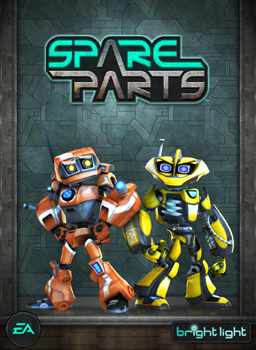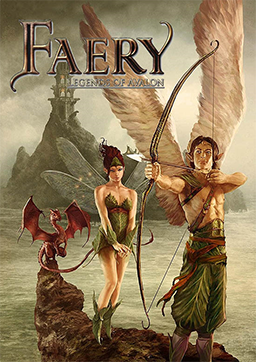
Stranglehold is a third-person shooter video game developed by Midway Studios – Chicago and Tiger Hill Entertainment and published by Midway Games. It was released in late 2007 for Microsoft Windows, PlayStation 3 and Xbox 360. It is Midway's first game to use Unreal Engine 3. Stranglehold is a sequel to John Woo's 1992 Hong Kong action film Hard Boiled and stars Chow Yun-fat in a reprisal of his role as hard-boiled cop Inspector "Tequila" Yuen. Stranglehold is the first project on which Woo and Chow have collaborated since Hard Boiled. The game received generally positive reviews from critics and sold more than one million units worldwide.

Rockstar Games Presents Table Tennis is a 2006 table tennis simulation video game developed by Rockstar San Diego and published by Rockstar Games. The game is a realistic simulation of the sport table tennis, with the main objective to make the opponent fail to hit the ball.

Virtua Tennis 3, known in Japan as Sega Professional Tennis: Power Smash 3, is the second arcade game sequel to Sega's tennis game franchise, Virtua Tennis. The arcade version of Virtua Tennis 3 is powered by the PC-based Sega Lindbergh arcade system board. Ports for the PC, Xbox 360, PlayStation Portable and PlayStation 3 consoles are also available with a traditional collection of tennis minigames that the home versions of Virtua Tennis are known for. In 2009, Sega updated and re-created Virtua Tennis 3 in Virtua Tennis 2009.

Vampire Rain is a survival horror stealth video game developed by Artoon. It was released for the Xbox 360 in Japan on January 25, 2007, and in North America on July 3, 2007. The game was later ported to the PlayStation 3 in 2008 under the title Vampire Rain: Altered Species. It received negative reviews for its difficulty, poor artificial intelligence, and controls.

Aqua is an arcade-action shooter with tactical elements, driven by a steampunk story in which the vast majority of the world is covered with water. Aqua was developed by Games Distillery on their own proprietary engine and published by Microsoft Game Studios. It was released for the Xbox 360 via Xbox Live Arcade on May 19, 2010. The game is set in an alternate reality where most of the Earth is covered with water and factions war for the remaining pieces of land.

MySims SkyHeroes is a video game developed by Behaviour Interactive and published by Electronic Arts. It is the sixth and final game in the MySims series. The game was released in 2010 for the Nintendo DS, PlayStation 3, Wii, and Xbox 360.

Deadliest Warrior: The Game is a fighting game developed by Pipeworks Software and published by 345 Games. Based on the Spike documentary TV series Deadliest Warrior, the game allows players to take control of various warriors from different time periods, utilizing their own unique set of weapons, armor, and fight styles. It was first released as a downloadable title for the Xbox 360's Xbox Live Arcade on July 14, 2010 and later for the PlayStation 3's PlayStation Network on October 5, 2010.

Hard Corps: Uprising is a run and gun video game developed by Arc System Works and published by Konami for the Xbox 360 and the PlayStation 3. The game was released digitally on Xbox Live Arcade on February 16, 2011 and on the PlayStation Network in March 2011. In Hard Corps: Uprising, the player assumes the role of an elite soldier simply called Bahamut, along with other main characters. Konami has added three additional player characters via downloadable content.

DeathSpank: Thongs of Virtue is an action role-playing game by game designer Ron Gilbert and is the sequel to DeathSpank. It was announced on August 23, 2010. The game adds new environments, modernized weapons, increased boss fights, and a new multiplayer character. Thongs of Virtue was released on September 21, 2010 on the PlayStation 3 via the PlayStation Network and on September 22, 2010 on the Xbox 360 via Xbox Live Arcade. The Microsoft Windows and Mac OS X versions were released November 30, 2010 and December 14, 2010, respectively via Steam.

NeverDead is a third-person shooter hack and slash video game developed by Rebellion Developments and published by Konami for the PlayStation 3 and Xbox 360.

Apache: Air Assault is a combat flight simulator video game for Microsoft Windows, PlayStation 3 and Xbox 360. It was developed by then-Russian developer Gaijin Entertainment, which is most famous for its World War II MMO-game War Thunder and published by Activision.

Spare Parts is a platform video game developed by EA Bright Light and published by Electronic Arts. It features cooperative gameplay for up to two players. Players can unlock new abilities which can be upgraded, and can also unlock new characters to play as. The story revolves around a pair of robots which become stranded on a planet by a race known as the Krofax. As the robots explore the planet they discover an abandoned spaceship. The ship's computer informs them that they can find the parts necessary to repair the ship scattered throughout the planet. The robots then set off to find the necessary parts in the hopes of escaping the planet.

Faery: Legends of Avalon is a role-playing video game released for Xbox Live Arcade on 10 November 2010, and for PlayStation Network and Microsoft Windows in 2011. It was developed by Spiders Studio and published by Focus Home Interactive.
Battle: Los Angeles is a first-person shooter developed by Saber Interactive and published by Konami for Microsoft Windows (Steam), PlayStation Network, and Xbox Live Arcade in 2011. It was released to conicide with the release of the 2011 film of the same name. Aaron Eckhart reprised his role for the game. Players assume the role of Corporal Lee Imlay throughout the game.

Choplifter HD is a video game developed by inXile Entertainment and released in 2012-2013. It is a 3D polygonal remake of the 1982 game Choplifter by Dan Gorlin. inXile hired Gorlin to serve as a design consultant for the game. As in the original game, players fly missions in a helicopter, defeating enemies and rescuing people. Originally released for Windows, Xbox 360 and PlayStation 3, the game was subsequently ported to the Ouya as well as Android devices. Choplifter HD was lauded for being true to the original, retaining the gameplay the series was known for, but was criticized for its high level of difficulty.

Harry Potter and the Deathly Hallows – Part 2 is a 2011 action-adventure video game. It is based on the 2011 film of the same name. It was released on 11 July 2011 for mobiles devices, and on 12 July in North America and 15 July in Europe for Microsoft Windows, Nintendo DS, PlayStation 3, Wii, and Xbox 360.

The Baconing is an action role-playing video game developed by Hothead Games. It was published by Valcon Games on the Xbox 360 and independently on all other platforms. It was released in August 2011 for PlayStation 3 via the PlayStation Network, for Mac OS X and Microsoft Windows via Steam, and for the Xbox 360 via Xbox Live Arcade. It is the third game in the DeathSpank series, and follows the character DeathSpank in his quest to defeat the AntiSpank, an evil incarnation of himself.

Warhammer 40,000: Kill Team is a top-down shooter game with twin-stick control, set in the Warhammer 40,000 future fantasy universe. Players play as Space Marines attempting to halt an Ork invasion spaceship, facing orks and, later, Tyranids. Four Space Marine classes are playable Sternguard Veteran, Techmarine, Vanguard Veteran and Librarian. The first two focusing on Shooting the later two on melee. The game supports single player and same screen multiplayer modes.

Mass Effect 2: Arrival is a downloadable content pack developed by BioWare and published by Electronic Arts for the 2010 action role-playing video game Mass Effect 2. It was released for Microsoft Windows, PlayStation 3, and Xbox 360 in 2011. Set within the Milky Way galaxy during the 22nd century, Arrival follows the story of Commander Shepard, an elite human soldier who must stop an imminent invasion of a highly advanced machine race of synthetic-organic starships that plan to conquer the galaxy.

Halo: Spartan Assault is a twin stick shooter video game developed by 343 Industries and Vanguard Games. Part of the Halo media franchise, the game was released on July 18, 2013, for Microsoft's Windows 8 and Windows Phone 8 platforms. The game subsequently released on Xbox 360, Xbox One, Steam, and iOS. Halo: Spartan Assault is set between the events of Halo 3 and Halo 4. Players control the human soldiers Sarah Palmer and Edward Davis as they fight a new splinter faction of the alien Covenant. The game launched with 25 single-player missions; an additional campaign released as downloadable content. The console versions also feature an exclusive cooperative horde mode.




















